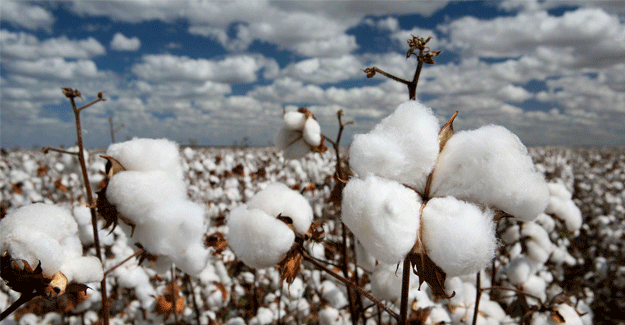
Experts Demand Inclusion Of GP While Deciding Minimum Support Price Of Cotton
Experts have demanded inclusion of ginning per cent (GP) which indicates staple fibre length, lint content, fineness and moisture content while deciding the minimum support price (MSP) of cotton.
They have argued that the higher the GP, the more is the fibre content, and so their cotton must fetch a higher price. They feel that this step would fetch a better MSP for farmers as well as lead to better quality of cotton reaching ginners.
However, experts have also indicated that incorporating GP as a measure of cotton quality won’t be easy since it would require instrumentation at every step of cotton purchase as well as processing.
According to Central Institute for Cotton Research (CICR) Director Keshav Kranthi, implementing such a change would require strong political will besides administrative efforts, though such a move would benefit farmers as well as ginners due to higher ginning percentage of cotton.
Instruments would be required at every step, from cotton collecting centres handling different hybrids, to ginners segregating cotton by GP to offer different prices for cotton. Small units of lilliput gins and small balances would be needed at every market yard to estimate GP accurately, he said.
"A few recent Bt cotton hybrids have 37-39% GP. Almost all indigenous Indian cotton varieties have GP of over 40%. Some indigenous Indian varieties have as much as 44% GP. Unfortunately, these do not command a higher price at present, even if they are better than American cotton hybrids. There should be a separate category of cotton with higher GP in the MSP list," he said.
He said that it is surprising that at present, ginners discourage indigenous Indian varieties of cotton, because double roller gins are unsuitable for ginning these.
“We also need adjustable double roller gins for indigenous Indian varieties of cotton, so that a system can be developed to pay higher price for higher GP at the market yards," he said.
Other experts have argued that cotton farmers have always been at the receiving end due to several reasons like bad weather and low MSP, besides rising costs of production.
According to a cotton scientist familiar with the issue, ginners and government purchasing departments are unable to quantify lint quantity in cotton at the point of purchase, due to which farmers end up getting lesser profits.
He has suggested that the government must fix MSP by lint quantity, like how sugar content is used to decide the price of sugarcane.
The present method of cotton grading, by estimating fibre qualities by visual inspection, results in subjective assessment depending on the individual carrying out the inspection, he said.
Therefore, fixing MSP by taking lint quantity into account would benefit cotton farmers, ginners as well as spinners, he said.
Since India's GP is around 32% to 33%, which is below the world average of 38% to 42%, Indian farmers and ginners end up getting a lesser price.
This is significant because an increase of just 1% in GP results in 3% higher fibre yields and ginners profit margin.
If the GP of Indian cotton is increased 4% to 5% from current levels, ginners would realise about 12% to 15% (450-550kg/quintal) more cotton, and some profit could be passed on to farmers as well, experts have argued.
Textile Excellence
If you wish to Subscribe to Textile Excellence Print Edition, kindly fill in the below form and we shall get back to you with details.








